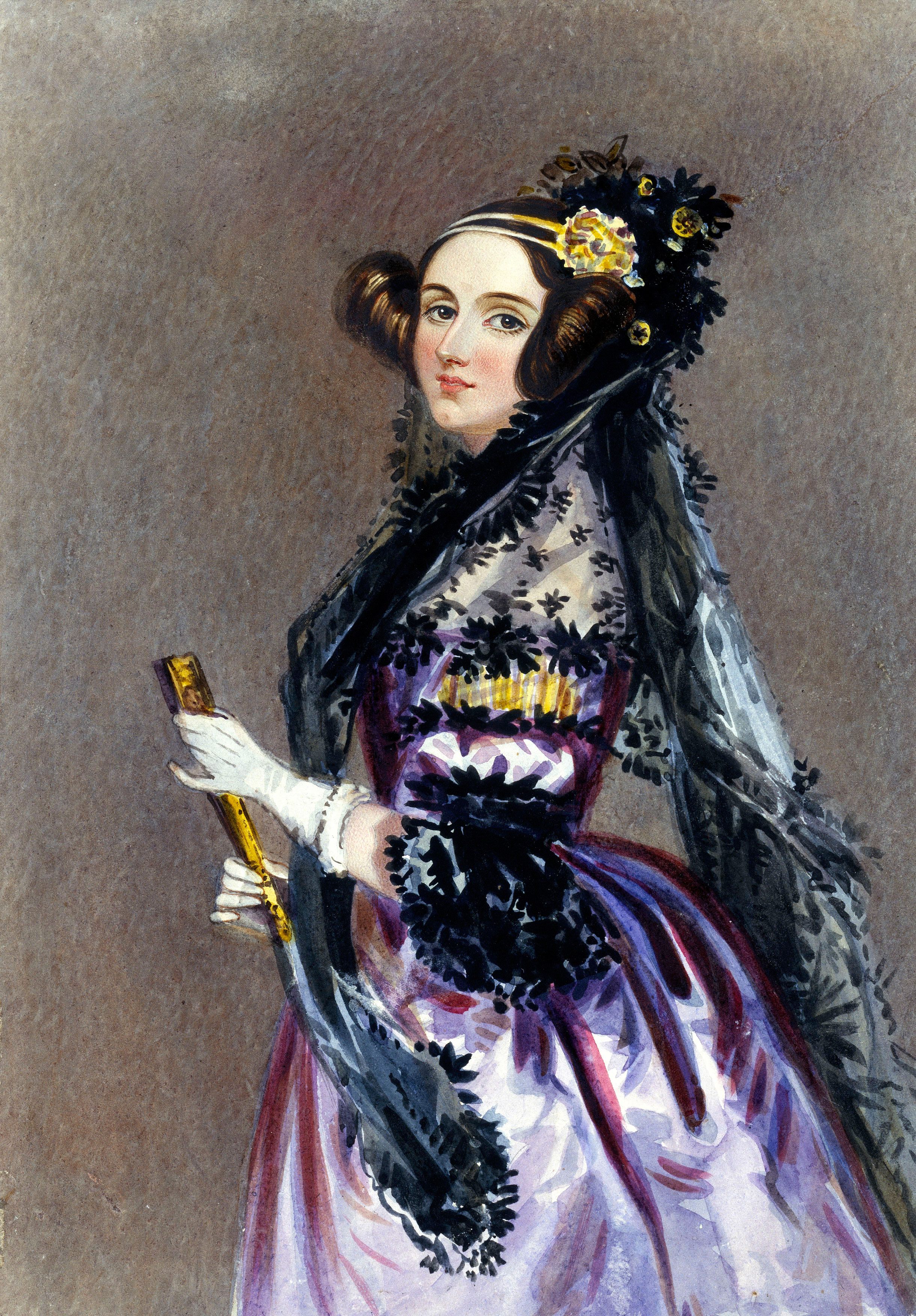Happy Ada Lovelace Day!

“Ada Lovelace portrait” (by Alfred Edward Chalon - Science & Society Picture Library, via Wikimedia Commons)
I never am really satisfied that I understand anything; because, understand it well as I may, my comprehension can only be an infinitesimal fraction of all I want to understand.
—Ada Lovelace
Ada Lovelace (1815–1852), widely considered to be the first computer programmer, got her own holiday in 2009. Founded by journalist and digital rights Suw Charman-Anderson, Ada Lovelace Day honors unsung women heroes of science past, and promotes the work of women in the STEM fields today.
The only legitimate daughter of poet and notorious adulterer Lord Byron, Ada was given intensive mathematic instruction from an early age, because her mother Anne Isabella believed that this would stave off the insanity she feared Ada had inherited from her father. Anne and Lord Byron separated when Ada was only one month old; he died without ever seeing his daughter again. Though Ada was often sick as a child, she was deeply engaged with her studies, working diligently on projects. Her first prolonged scientific inquiry was at age 12 when she decided to understand the mechanics of flying, intensively studying bird anatomy and different materials that could be used to construct wings. She wrote a book of her findings with illustrated plates called Flyology.
By age 17, Ada had begun to show ”remarkable mathematic abilities,” and she was also fascinated by metaphysics, phrenology, and mesmerism. She wanted to create “a calculus of the nervous system”: a mathematically based model for the way the brain and nerves give rise to thoughts and feelings. The following year she met mathematics professor, inventor, and mechanical engineer Charles Babbage, who was working on a prototype of a mechanical calculator called a Difference Engine. The engine was never completed due primarily to funding disputes, but it is considered to be one of the first programmable computers. Though Babbage was more than twice her age, he and Ada began an intense intellectual partnership that would last the rest of her life. Babbage adored Ada, calling her the “Enchantress of Numbers.”
When Babbage was working on his next prototype, the Analytical Engine, the mathematician Luigi Menabrea wrote a French paper on its uses, which Ada spent nine months translating, adding an extensive set of notes that became nearly three times as long as the paper itself. These notes explained the wider applications of the engine and also included a specific algorithm that she believed would teach the engine how to do calculations of Bernoulli numbers. Babbage wrote that Ada’s notes “entered fully into almost all the very difficult and abstract questions connected with the subject,” and the paper is now considered to be the very first description of algorithms and computer programming.
Ada was married in 1835 and had three children; she died in 1852 of uterine cancer — likely exacerbated by bloodletting, which was standard at the time.
Coinciding with Ada Lovelace Day 2014, Melville House Press has released a new biography: Ada’s Algorithm by James Essinger. In previous years the holiday has been celebrated with an Ada Lovelace Edit-a-thon at Brown University, where volunteers added and improved Wikipedia entries about female scientists, and an Ada Lovelace Conference. The computer language created on behalf of the US Department of Defense is named Ada, and in 2012 the Mayor of London named a massive tunnel boring machine in her honor. She even got a Google Doodle in 2012, on the 197th anniversary of her birth.
Bonus: Want to read all about Ada in comic form? Check out this one from Kate Beaton or this one from Sydney Padua.















Follow us on Twitter to get the latest on the world's hidden wonders.
Like us on Facebook to get the latest on the world's hidden wonders.
Follow us on Twitter Like us on Facebook